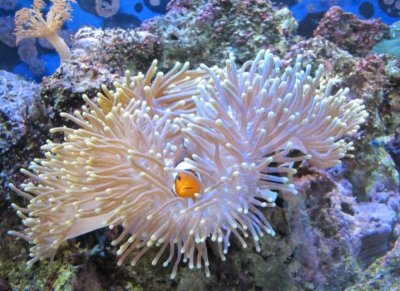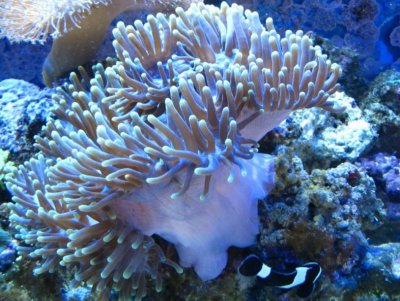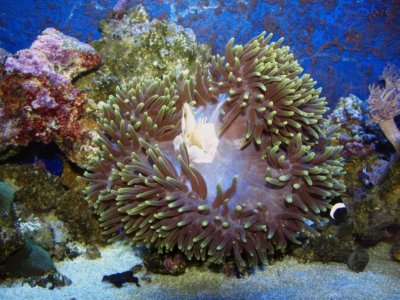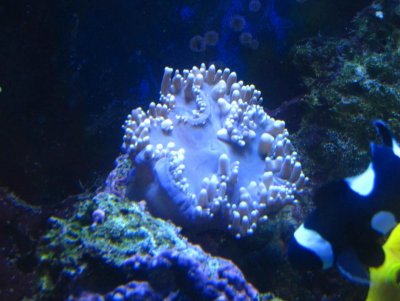I have a H. magnifica some three and a half years from now. It was always doing fine, eating well, and seemed always very happy. It host 3 adult ocellaris clowns, a reproducing pair plus a little one.
The last six months it changed a lot. It seems that it shrunk, and the tentacles became a lot shorter. It became also very difficult to feed. Eats very slow, and usually the clowns steal the food from its mouth.
Water is exactly the same, I keep always the same routine. The only thing that changed is that I introduced some corals in the tank, like zooanthus, caulastrea, montipora and seriatopora. I've also noticed that my mushrooms (mainly discossomas) sufered also a bit. Some of them died, and the ones that survived don't grow and reproduce like before.
Could it be any chemical war between corals an anemone?
My tank has 220 litre, I have 3 clowns, 3 bengai cardinals, one yellow Zebrassoma, one flame angel, three gobies 3 clams, plus the refered corals.
I attached 4 pics, from 2011, 2012, 2013 and from today. I think you can see the big difference.
I really want to do something, because this nem is my favorite animal from my tank, and I hope that it will live many years from now.
The last six months it changed a lot. It seems that it shrunk, and the tentacles became a lot shorter. It became also very difficult to feed. Eats very slow, and usually the clowns steal the food from its mouth.
Water is exactly the same, I keep always the same routine. The only thing that changed is that I introduced some corals in the tank, like zooanthus, caulastrea, montipora and seriatopora. I've also noticed that my mushrooms (mainly discossomas) sufered also a bit. Some of them died, and the ones that survived don't grow and reproduce like before.
Could it be any chemical war between corals an anemone?
My tank has 220 litre, I have 3 clowns, 3 bengai cardinals, one yellow Zebrassoma, one flame angel, three gobies 3 clams, plus the refered corals.
I attached 4 pics, from 2011, 2012, 2013 and from today. I think you can see the big difference.
I really want to do something, because this nem is my favorite animal from my tank, and I hope that it will live many years from now.
























